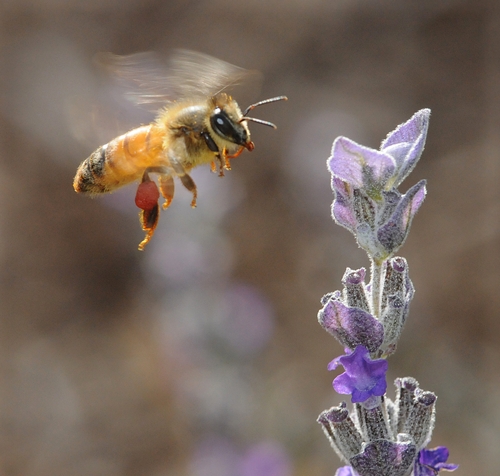The honey bees are hungry.
There are fewer flowers blooming this time of the year, so the bees are foraging for what they can.
This morning the bees were all over the lavender (Lavandula) in our yard. One bee, packing red pollen (probably from rock purslane), glided in, strapped herself to the lavender, and sipped the nectar from a floral "cup."
The bees are a little testy this time of the year. They're foraging for their winter stores as the days grow colder and shorter and the floral supply fades. "Honey bees don't forage when it is cool, below around 50 degrees," says bee breeder-geneticist Kim Fondrk of the University of California, Davis.
To help support the declining bee population, it's crucial to offer the bees a year-around food supply, and that's exactly what the Häagen-Dazs Honey Bee Haven, a half-acre bee friendly garden planted next to the Harry H. Laidlaw Jr. Honey Bee Research Facility at the UC Davis, will do. A public open house is scheduled June 19.
Meanwhile, it was Red Letter Day today as the pollen-packing bee made her rounds.
Special delivery.
Attached Images:

Packing Red Pollen

Hanging On

Red Tongue, Red Pollen